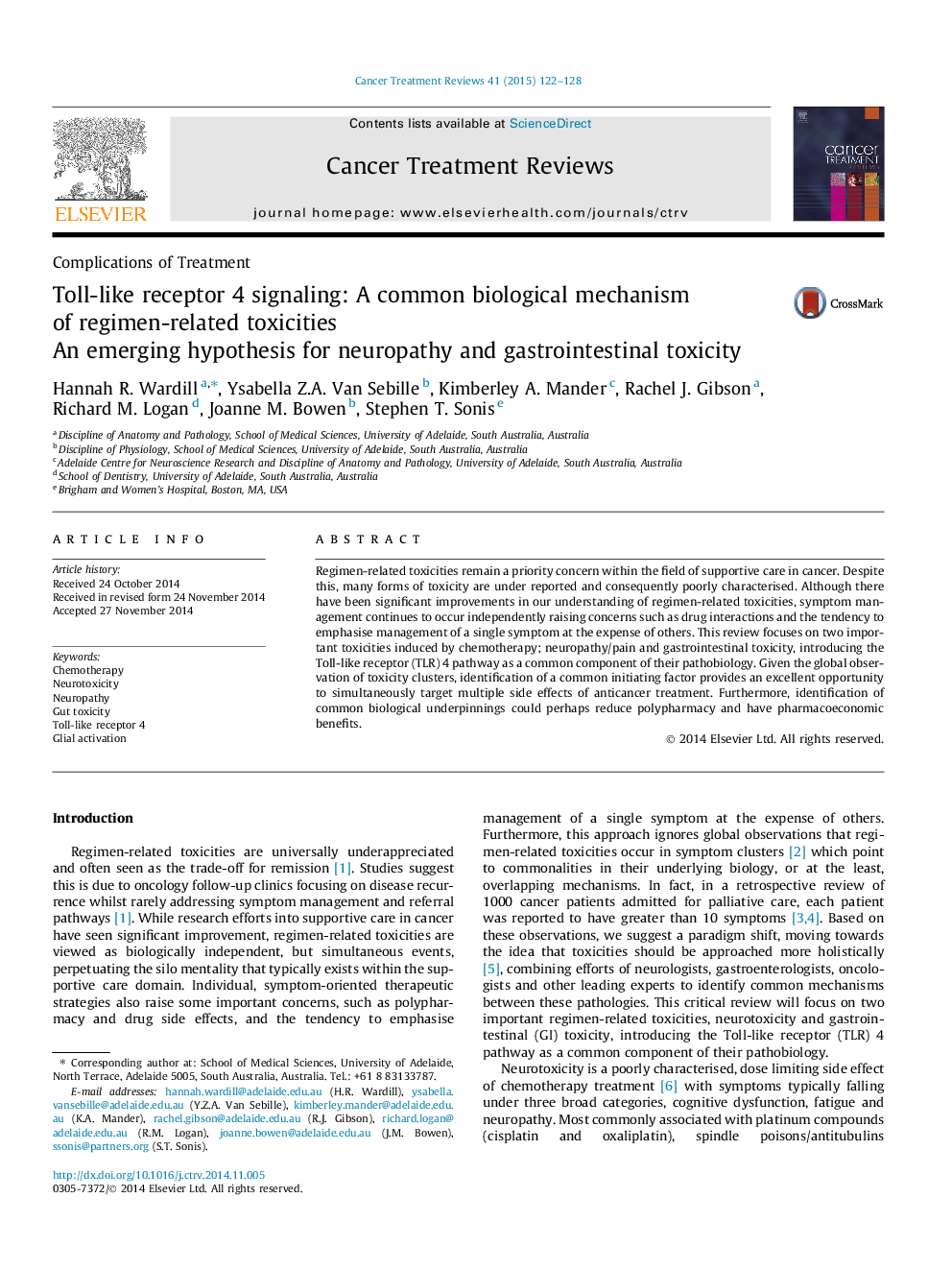| Article ID | Journal | Published Year | Pages | File Type |
|---|---|---|---|---|
| 6190448 | Cancer Treatment Reviews | 2015 | 7 Pages |
â¢Regimen-related toxicities exhibit symptom clusters indicative of common biology.â¢Neuropathy and GI toxicity are dose-limiting side effects of chemotherapy.â¢TLR4 has established roles in neuropathic pain through glial activation.â¢TLR4 is an emerging mediator of GI toxicity.â¢Targeting TLR4 provides an opportunity to simultaneously treat both toxicities.
Regimen-related toxicities remain a priority concern within the field of supportive care in cancer. Despite this, many forms of toxicity are under reported and consequently poorly characterised. Although there have been significant improvements in our understanding of regimen-related toxicities, symptom management continues to occur independently raising concerns such as drug interactions and the tendency to emphasise management of a single symptom at the expense of others. This review focuses on two important toxicities induced by chemotherapy; neuropathy/pain and gastrointestinal toxicity, introducing the Toll-like receptor (TLR) 4 pathway as a common component of their pathobiology. Given the global observation of toxicity clusters, identification of a common initiating factor provides an excellent opportunity to simultaneously target multiple side effects of anticancer treatment. Furthermore, identification of common biological underpinnings could perhaps reduce polypharmacy and have pharmacoeconomic benefits.
